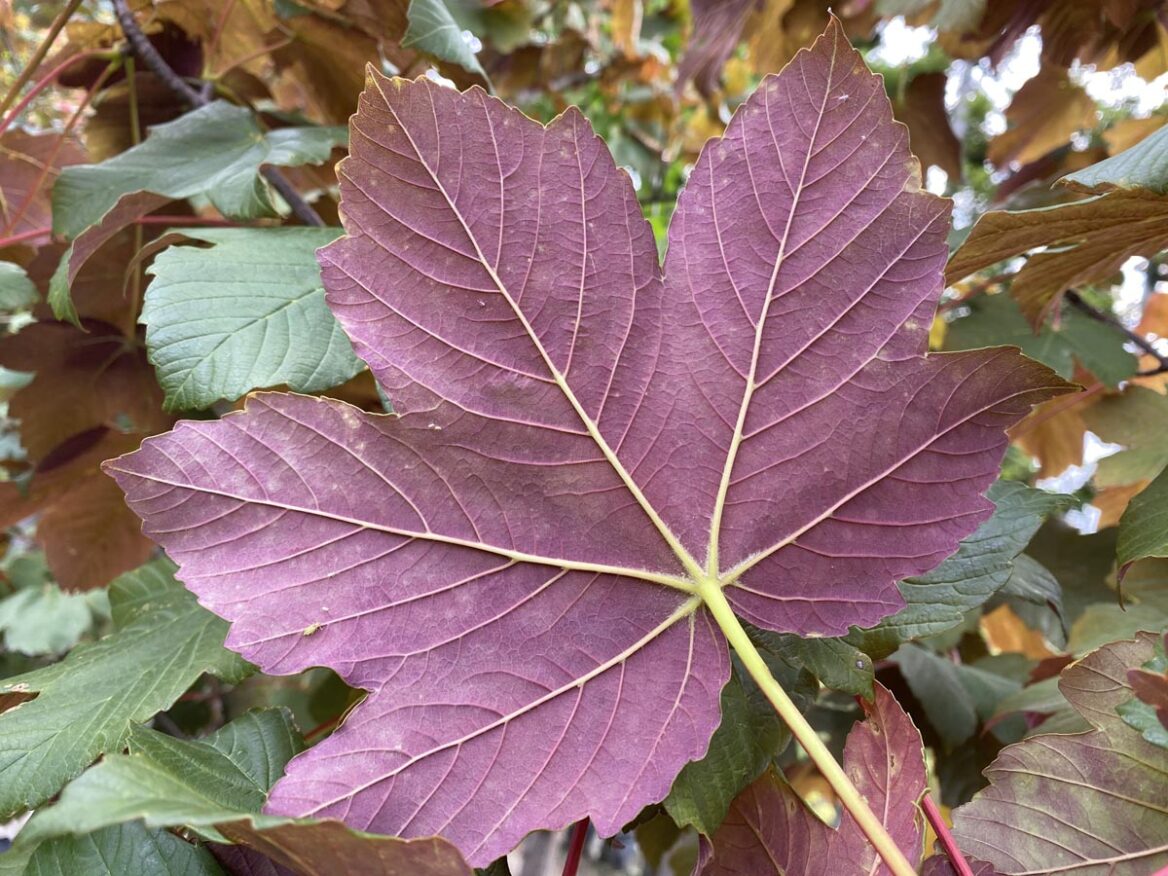Acer pseudoplatanus ‘Purpureum’
Sycamore Maple
Acer pseudoplatanus ‘Purpureum’ is an excellent choice for providing shade and can serve as a lovely lawn specimen. It produces large, bronze-green, large-lobed leaves with a purple undertone. During the autumn season, the leaves of Acer pseudoplatanus ‘Purpureum’ turn yellow. It’s worth noting that its seeds are toxic to horses. Acer pseudoplatanus ‘Purpureum’ is capable of tolerating cold, coastal exposure, and some drought conditions. It thrives in a cool summer climate with soil that is both moist and well-drained. Acer pseudoplatanus is deciduous and native to Europe. Learn more about Acer pseudoplatanus. Acer pseudoplatanus ‘Purpureum’ was described by Groinland in 1862 and introduced by Späth nursery in Berlin, Germany in 1883. It reached North American cultivation around 1897, and has been available commercially there since around 1930.
Other common name(s):
Synonyms: Acer pseudoplatanus f. purpureum, Acer pseudoplatanus 'Atropurpureum', Acer pseudoplatanus 'Purpureum Spaethii', Acer pseudoplatanus 'Spaethii'
$156.00 – $650.00
Deciduous
Height: 8.0m
Width:
6.0m
Estimated 10 year height and width
Acer pseudoplatanus ‘Purpureum’ stock information
Full Stocklist| Grade | Height | Standard | Available | I/P | Qty / Price |
|---|




